Charleston Naval Shipyard (Navy Yard)
Introduction
Text-to-speech Audio
The Charleston Naval Shipyard (formerly the Charleston Navy Yard) was a prominent ship and submarine dockyard that was operational from 1901, till its closure in 1996. The Charleston Naval Shipyard produced a plethora of vessels for the United States Navy, including destroyers, ship tenders, and submarines. The Shipyard was a key shipbuilding center during World War 2 and continued to be strategically important during the Cold War as a nuclear submarine outfitter and home base for many ships that belonged to the U.S. Navy's Atlantic Fleet.
Images
U.S.S. Beatty and the U.S.S. TIllman in Drydock in 1941
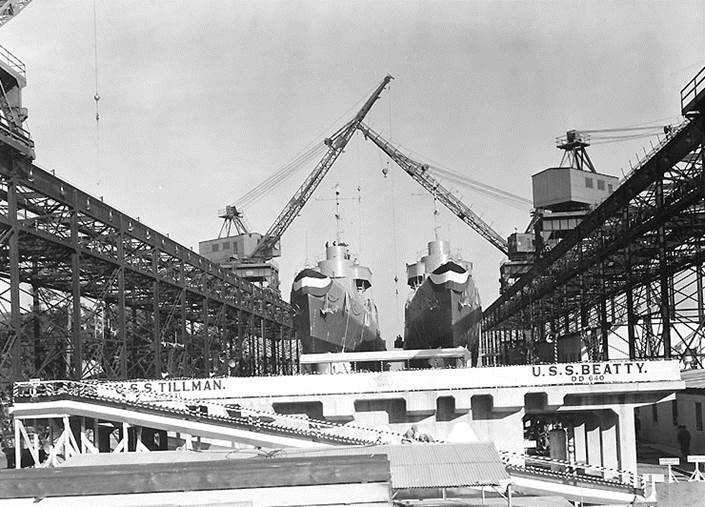
The Charleston Naval Yard Power House building
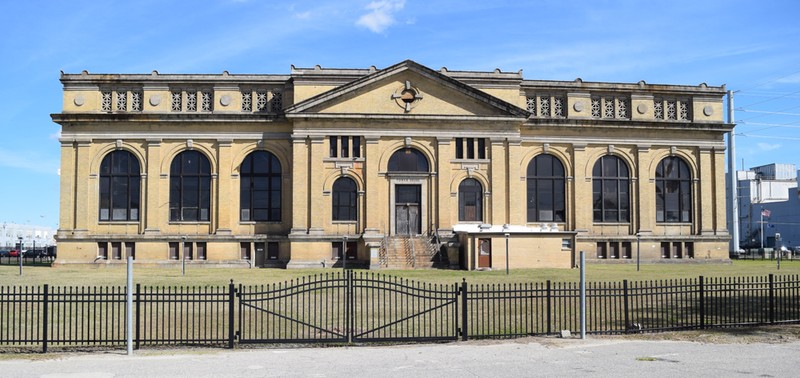
The Greater Charleston Naval Base Memorial at night
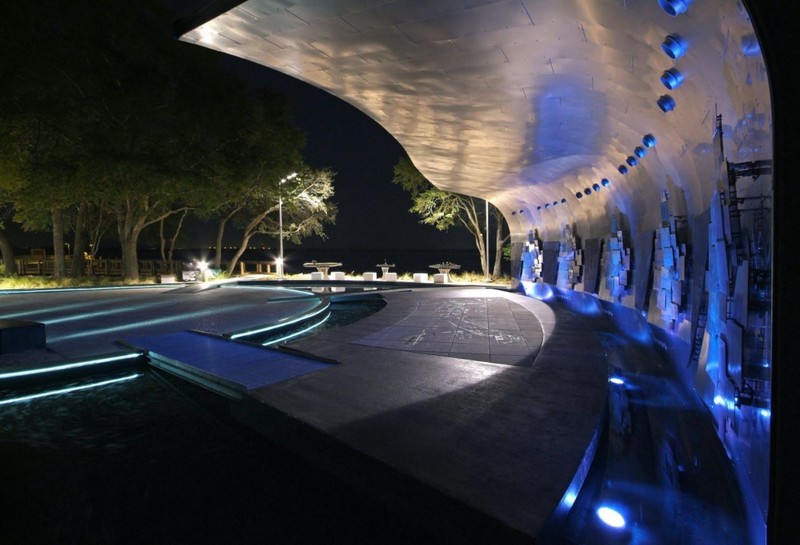
Aerial view of the Charleston Navy Yard in 1941.
.jpg)
A current picture of the main Naval Hospital building in the Historic Hospital District. It has long since been abandoned
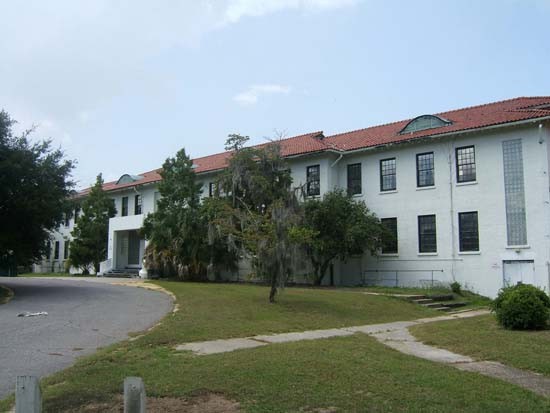
The Clothing Factory located at the Naval Yard.
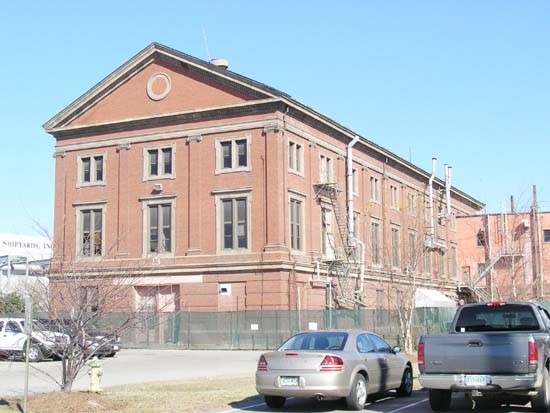
Backstory and Context
Text-to-speech Audio
In 1890, Charleston Mayor J. Adger Smith and Governor Benjamin Tillman began lobbying the Federal Government to build a naval dockyard in Charleston. The city and state had yet to fully recover from the Civil War, and a large-scale government project was seen as a potential boost to the local economy. In the Spring of 1901, the project was approved and U.S. Navy officially took control of the land on the banks of the Cooper River in North Charleston. The Charleston Navy Yard officially began construction in 1901 as a shipbuilding center for the United States Navy, with the first drydock completed in 1907. At the time of construction, it was the largest drydock on the East Coast.
Production at the facility ramped up significantly in April 1917, when the United States entered the First World War. Over 20 major vessels were constructed during the course of the war, including the U.S.S. Tillman, the dockyard's first destroyer-class vessel. The Tillman, named after the Naval Yard's original sponsoring Senator, would go on to serve in both the United States Navy (USN) during the interwar period, and with the British Royal Navy during World War 2. The Tillman would survive both World Wars, and be permanently decommissioned and retired in 1945. During WWI, a Naval Training Facility would be established at the Navy Yard named Camp Bagley. A Naval Hospital, clothes factory, large pier, and ammunition warehouses were also built during the wartime boom. Some of these improvements are still in existence today, such as the Naval Hospital Historic District, where visitors can still see the Spanish-Colonial-style buildings that make up the former hospital and other navy personnel quarters. Employment at the Navy Yard peaked during the war at around 5,600 personnel.
Even before the attack on Pearl Harbor and America's entrance into the war in 1941, the Charleston Navy Yard had been producing, repairing, and retrofitting ships during the U.S.'s recovery from the Great Depression. President Franklin Delano Roosevelt visited the dockyard several times during the 1930s and early 1940s. In 1935, FDR gave a speech emphasizing how important the dockyard was to the security of the nation, and how important it is to the surrounding communities as a place for work. In 1939, the dockyard received millions of dollars in federal money to improve its facilities and began ramping up production with war looming and the U.S. producing more and more for the Allies of WW2.
During World War 2, production at the Navy Yard reached maximum capacity, with hundreds of ships coming through the dockyards for repairs. The two largest ships the dockyard produced, the U.S.S.Tidewater and U.S.S. Bryce Canyon, were laid down in 1944. The Navy Yard was a vital production center for the U.S. Navy, which at the time was engaged in a brutal naval war with Japan. Employment at the dockyard peaked all-time in 1943, with nearly 26,000 civilian employees. The Navy Yard was a vital part of the South Carolinian economy during the war. It is estimated that the per capita income of Charleston rose by three times the pre-war levels, a much larger increase than other parts of the nation during the war. Over 55,000 people migrated to the area seeking employment. Many of these people settled down into what is now North Charleston, the independent city where the Navy Yard is located.
After World War 2, the Navy Yard, now known as the Charleston Naval Shipyard, continued its role as a vital shipbuilding facility. With the onset of the Cold War, came new technological innovations such as the nuclear-powered submarine. One of the main tasks given to the Naval Shipyard was the retrofitting of old diesel-powered submarines into modern nuclear-powered machines. As well as this new duty, the military reorganized the operational area of the drydock into Naval Base, Charleston. This new designation meant the construction of new facilities, and the Naval Shipyard became the home port for the U.S. Navy's Ballistic Missile Submarine Fleet. Production of combat vessels rose and fell as the U.S. became engaged in various "flashpoints" of the Cold War, such as the Korean War and the Vietnam War. In 1983, the Naval Shipyard was the third largest naval base in the continental United States. The Naval Shipyard ceased operations in 1996 due to post-Cold War arms treaties, but the shipyards are leased by private companies for their own work.
As the Naval Shipyard is still in use by some private companies, visitors are not able to traverse the entirety of the facility. However, the most prominent features of the facility, the Power House and the drydocks, are visible from the street or down the pier in North Charleston. Near the Shipyard are several historic sites, such as the Naval Hospital Historic District located at Turnbull Avenue, North Charleston, SC 29408, and the Greater Charleston Naval Base Memorial located at Everglades Ave, North Charleston, SC 29405. The Historic District is mostly composed of abandoned portions of the naval hospital, workers' quarters, and officer's quarters that had been built during the facility's heyday during the World War period. The Greater Charleston Naval Base Memorial is a small but beautiful memorial that is a tribute to the Naval Shipyard, the Charleston Naval Base, and the thousands of men and women who worked at the facilities over its nearly 100-year lifespan. The memorial contains information about the facilities, pictures from all eras of its operation, and brass models of several types of ships produced at the facility.
Sources
Naval Base History, City of North Charleston. January 1st 2021. Accessed November 14th 2021. https://www.northcharleston.org/visitors/attractions/greater-charleston-naval-base-memorial/naval-base-history/.
Greater Charleston Naval Base Memorial, City of North Charleston. January 1st 2021. Accessed November 15th 2021. https://www.northcharleston.org/visitors/attractions/greater-charleston-naval-base-memorial/.
Charleston Navy Yard Historic District, Charleston County, South Carolina Department of Archives and History. August 6th 2006. Accessed November 15th 2021. http://www.nationalregister.sc.gov/charleston/S10817710175/index.htm.
Edmonds, Mary W.. Navy Yard Application to National Register of Historic Places, United States Department of the Interior - National Park Service. Accessed November 15th 2021. http://www.nationalregister.sc.gov/charleston/S10817710175/S10817710175.pdf.
Naval Facilities Engineering System Command
Charleston Business Journal
BNIM Project Website
By U.S. Navy - Official U.S. Navy photo NH 93378 from the U.S. Navy Naval History and Heritage Command, Public Domain, https://commons.wikimedia.org/w/index.php?curid=48888376
South Carolina Department of Archives and History
South Carolina Department of Archives and History
